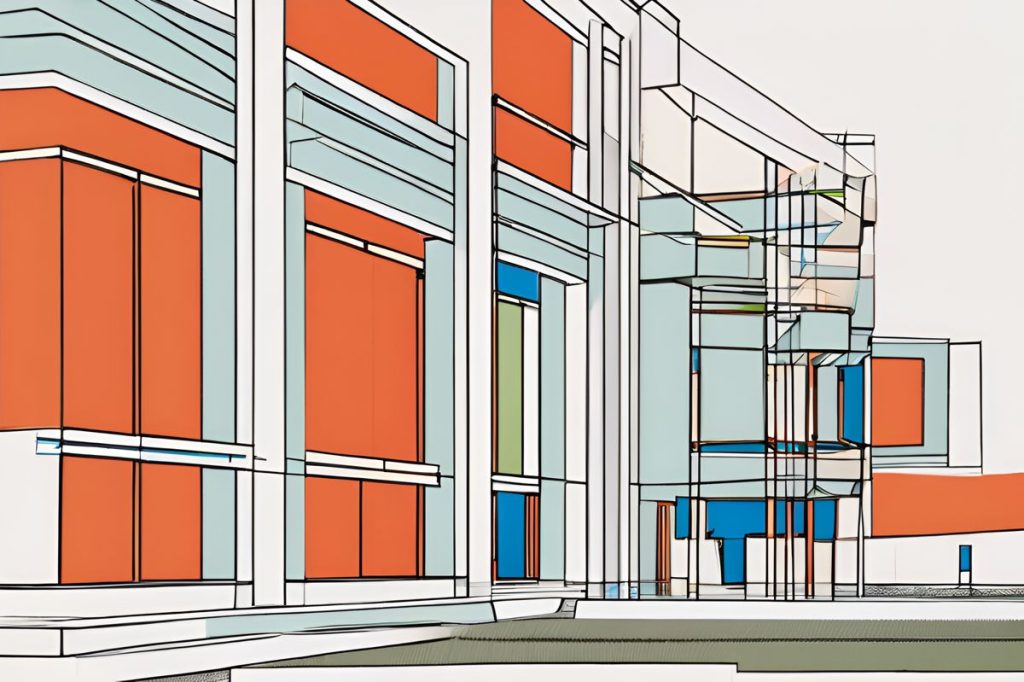The architectural revitalization of Cyprus’ Labour Ministry seeks to preserve its historical essence while incorporating modern elements and sustainable practices. This project aims to create a space that reflects Cyprus’ dynamic spirit and fosters social dialogue amidst a blend of old and new architectural styles.
What is the purpose of the architectural revitalization of Cyprus’ Labour Ministry?
The architectural revitalization of Cyprus’ Labour Ministry aims to modernize the building while preserving its historical essence. It seeks to maintain the architectural soul of the original 1960s design by Costas Vafeades, incorporate sustainable practices, and create a space that fosters social dialogue and reflects Cyprus’ dynamic spirit.
Preserving Heritage Through Design
A Nod to the Past
The Labour Ministry of Cyprus is set to receive an architectural transformation that pays homage to its historical essence. A tender for the design project was announced last Friday, marking a significant step in the ministry’s journey towards modernization while retaining its unique historical values. The building’s original architecture, a masterpiece crafted in the 1960s by the renowned Costas Vafeades, stands as a symbol of Cypriot identity and the architectural lineage of the Vafeades family. Transport Minister Alexis Vafeades, son of Costas, upholds his father’s legacy as the ministry prepares for its renaissance.
An outdoor press event, backdropped by the iconic building, unveiled the project. Here, key figures, such as the Labour Minister Yiannis Panayiotou and the Transport Minister, together with a representative from the Cyprus Scientific and Technical Chamber (Etek), celebrated the launch. They envisioned this as more than a mere renovation but as a rekindling of Cypriot architectural spirit.
Modernizing with Sensitivity
As the first government edifice of the Republic of Cyprus post-independence, the labour ministry stands as a bastion of social progress and historical memory. Minister Panayiotou highlighted the building’s representation of significant societal milestones, including the advancement of workers’ rights and the establishment of fair employment practices. With reverence for the past and eyes set on a prosperous future, the ministry aims to foster economic growth and social unity.
The upcoming overhaul is about striking a balance between functional modernization and preserving the architectural soul of the building. The challenge will be to introduce contemporary elements that complement the classic design, thus creating a seamless blend of old and new. As climate concerns remain as relevant today as they were in the 60s, the renovation will also serve as an example of sustainable practices, addressing these issues head-on.
Fostering Creativity in Architecture
The Competition and Its Significance
To spearhead this ambitious project, a design competition is set to ignite the creativity of architects far and wide, with submissions accepted until September 17, 2024. Etek’s board member, architect Andreas Papallas, outlined the competition’s criteria, setting the stage for a diversity of innovative proposals. The winning design will need to encapsulate the essence of Cypriot architecture, while also accommodating the needs of a modern workspace.
Situated on Vyronos Avenue in Nicosia, the Labour Ministry’s redesign is not merely about aesthetic enhancement; it’s a recommitment to the values and aspirations that the building has always symbolized. The architects will be tasked with creating a space that continues to foster social dialogue and reflects the dynamic spirit of Cyprus.
The Legacy of Costas Vafeades
Reflecting on the historical significance of the task, the building is a testament to the ingenuity of Costas Vafeades. His architectural prowess is evident in the facade’s elegance and the ingenious interior atrium that bathes the space in natural light. With the renovation, his legacy will be rejuvenated, ensuring that the ministry remains a cornerstone of Cypriot culture and a beacon of progressive architectural thought.
Outside the ministry, a symbolic monument stands as a tribute to tripartite social cooperation, embodying the collaborative spirit that is so intrinsic to the Cypriot ethos. Designed by artist Giorgos Georgiou in the 1970s, it reminds visitors of the value of harmony between the workforce, employers, and the state.
Charting the Course for Cyprus’ Architectural Future
As Cyprus looks ahead, the renovation of the Labour Ministry represents more than a mere update to a building; it is a reaffirmation of the nation’s commitment to its cultural identity and its readiness to embrace the future. The project serves as a bridge connecting the architectural triumphs of the past with the innovative potential of tomorrow, ensuring that the Labour Ministry remains a pillar of pride for all Cypriots.
What is the significance of the architectural revitalization of Cyprus’ Labour Ministry?
The architectural revitalization of Cyprus’ Labour Ministry holds great significance as it aims to preserve the historical essence of the building while incorporating modern elements and sustainable practices. This project symbolizes the nation’s commitment to its cultural identity, social progress, and architectural heritage.
What are the main goals of the design competition for the Labour Ministry’s revitalization?
The design competition for the Labour Ministry’s revitalization seeks to ignite the creativity of architects by encouraging innovative proposals that encapsulate the essence of Cypriot architecture while meeting the needs of a modern workspace. The winning design will need to strike a balance between preserving the building’s historical significance and introducing contemporary elements.
How does the Labour Ministry’s architecture reflect the values of Cypriot society?
The architecture of the Labour Ministry reflects the values of Cypriot society by serving as a symbol of social progress, historical memory, and the advancement of workers’ rights. The upcoming revitalization project aims to foster economic growth, social unity, and sustainable practices, all while preserving the building’s unique historical and architectural significance.
Who was Costas Vafeades and what is his legacy in relation to the Labour Ministry?
Costas Vafeades was a renowned architect who designed the Labour Ministry building in the 1960s, making it the first government edifice of the Republic of Cyprus post-independence. His architectural legacy is evident in the building’s elegant facade and innovative interior atrium that bathes the space in natural light. The upcoming revitalization project aims to rejuvenate Vafeades’ legacy and ensure that the Labour Ministry remains a cornerstone of Cypriot culture.

